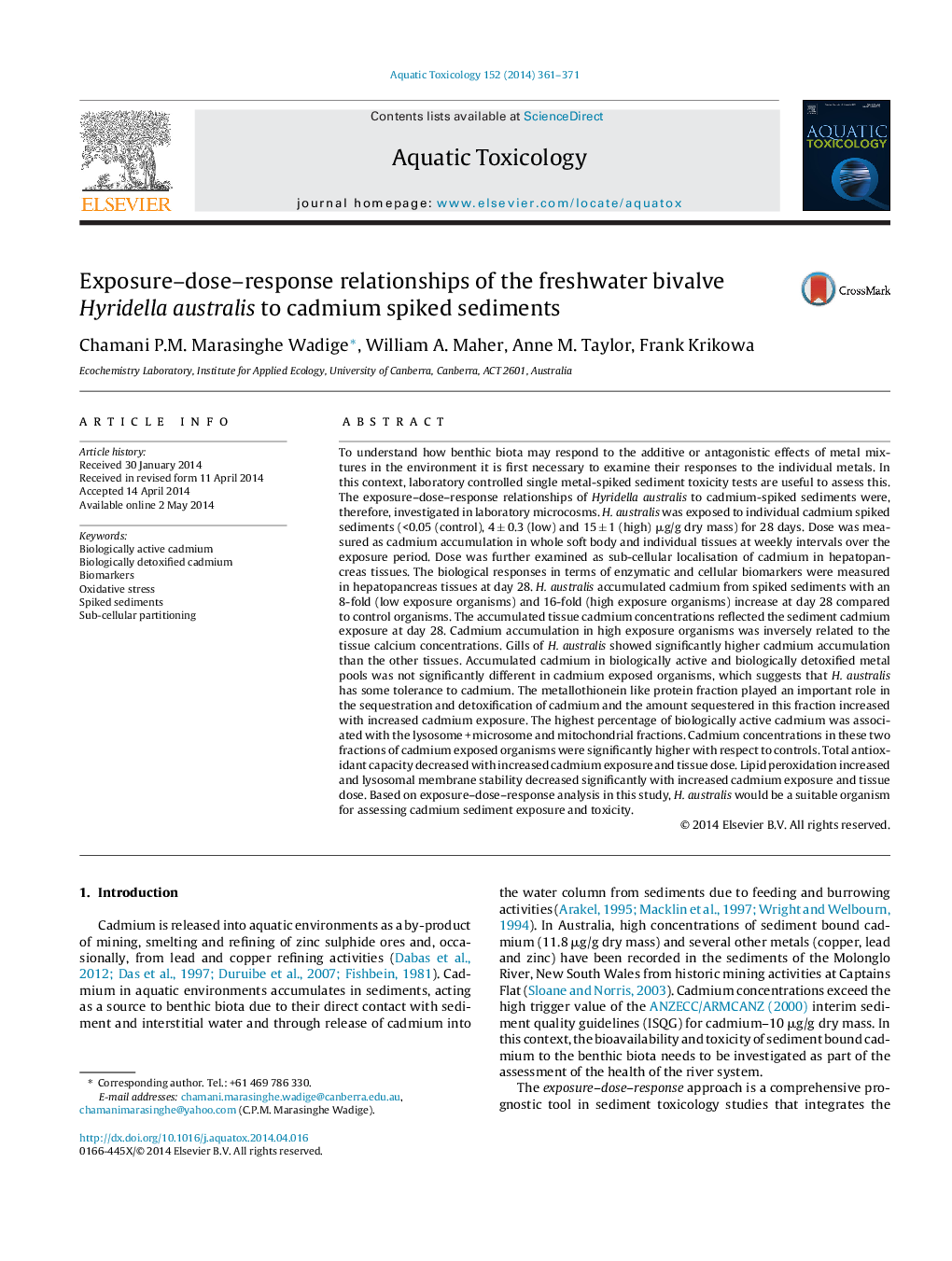| کد مقاله | کد نشریه | سال انتشار | مقاله انگلیسی | نسخه تمام متن |
|---|---|---|---|---|
| 6382429 | 1625953 | 2014 | 11 صفحه PDF | دانلود رایگان |
عنوان انگلیسی مقاله ISI
Exposure-dose-response relationships of the freshwater bivalve Hyridella australis to cadmium spiked sediments
دانلود مقاله + سفارش ترجمه
دانلود مقاله ISI انگلیسی
رایگان برای ایرانیان
کلمات کلیدی
موضوعات مرتبط
علوم زیستی و بیوفناوری
علوم کشاورزی و بیولوژیک
علوم آبزیان
پیش نمایش صفحه اول مقاله

چکیده انگلیسی
To understand how benthic biota may respond to the additive or antagonistic effects of metal mixtures in the environment it is first necessary to examine their responses to the individual metals. In this context, laboratory controlled single metal-spiked sediment toxicity tests are useful to assess this. The exposure-dose-response relationships of Hyridella australis to cadmium-spiked sediments were, therefore, investigated in laboratory microcosms. H. australis was exposed to individual cadmium spiked sediments (<0.05 (control), 4 ± 0.3 (low) and 15 ± 1 (high) μg/g dry mass) for 28 days. Dose was measured as cadmium accumulation in whole soft body and individual tissues at weekly intervals over the exposure period. Dose was further examined as sub-cellular localisation of cadmium in hepatopancreas tissues. The biological responses in terms of enzymatic and cellular biomarkers were measured in hepatopancreas tissues at day 28. H. australis accumulated cadmium from spiked sediments with an 8-fold (low exposure organisms) and 16-fold (high exposure organisms) increase at day 28 compared to control organisms. The accumulated tissue cadmium concentrations reflected the sediment cadmium exposure at day 28. Cadmium accumulation in high exposure organisms was inversely related to the tissue calcium concentrations. Gills of H. australis showed significantly higher cadmium accumulation than the other tissues. Accumulated cadmium in biologically active and biologically detoxified metal pools was not significantly different in cadmium exposed organisms, which suggests that H. australis has some tolerance to cadmium. The metallothionein like protein fraction played an important role in the sequestration and detoxification of cadmium and the amount sequestered in this fraction increased with increased cadmium exposure. The highest percentage of biologically active cadmium was associated with the lysosome + microsome and mitochondrial fractions. Cadmium concentrations in these two fractions of cadmium exposed organisms were significantly higher with respect to controls. Total antioxidant capacity decreased with increased cadmium exposure and tissue dose. Lipid peroxidation increased and lysosomal membrane stability decreased significantly with increased cadmium exposure and tissue dose. Based on exposure-dose-response analysis in this study, H. australis would be a suitable organism for assessing cadmium sediment exposure and toxicity.
ناشر
Database: Elsevier - ScienceDirect (ساینس دایرکت)
Journal: Aquatic Toxicology - Volume 152, July 2014, Pages 361-371
Journal: Aquatic Toxicology - Volume 152, July 2014, Pages 361-371
نویسندگان
Chamani P.M. Marasinghe Wadige, William A. Maher, Anne M. Taylor, Frank Krikowa,